#haitian doll
Explore tagged Tumblr posts
Text
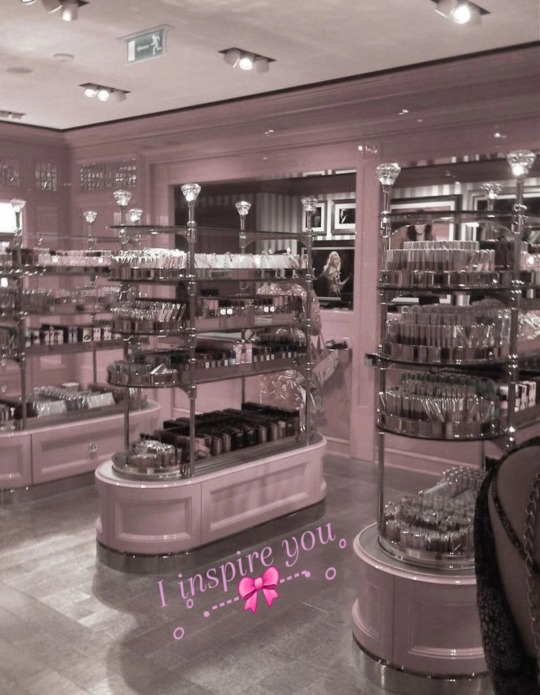

Boudior, trashy french burlesque.
I love seeing everyone's aesthetic change.
🐩 🎟
#coquette#dollcore#dollette#kawaii#cherrycore#cherry#softette#hyper feminine#soft girl#barbie#i inspire you#french couture#frenchification#frenchie#sweet couture#trashy couture#cherry couture#bimbification#girlification#dollification#dolliest#trashification#trashy y2k#trashy french burlesque#french doll#haitian doll#it girl thoughts#it girl#that girl#me coded
21 notes
·
View notes
Text
Erzulie Freda.
Okay. When I saw this I had to share it. This is from Houngan Jak. A doll of Ayibobo Mambo Maitresse Erzulie wearing beautiful real jewelry and clothing.
(If you're wondering. Ayibobo is a ritual word that's a equivalent to “Amen” or "Blessings" and a few other meanest depending on how it's used)
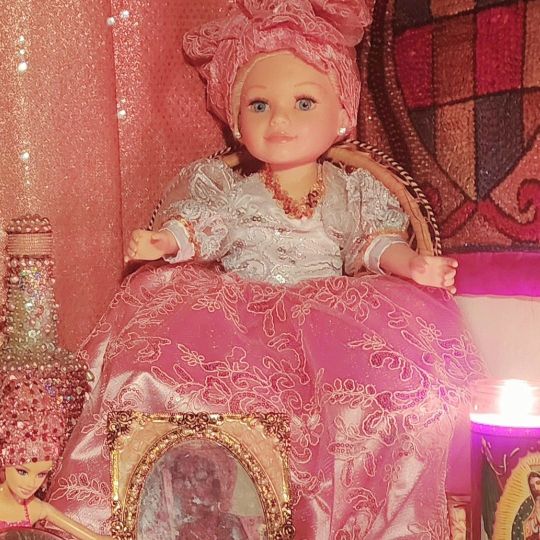
👇Next is a photo of her being bathed in and bath made for her.
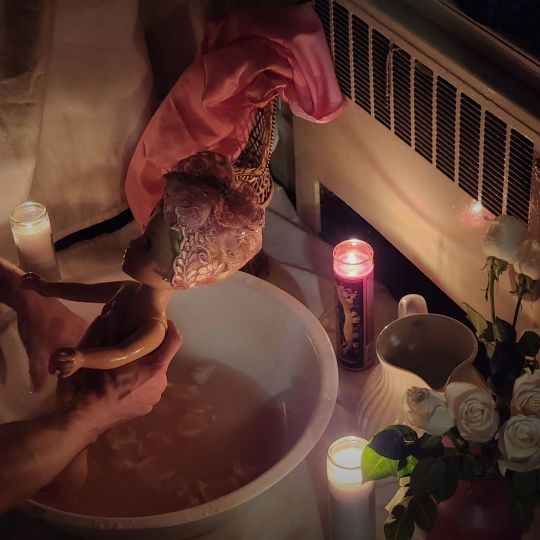
👇This is her altar. With items that she loves.
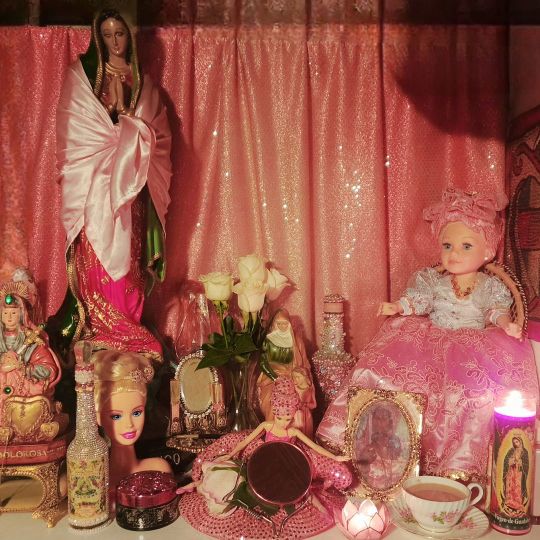
👇Oh, Check this out a Florida Water bottle created for her.

These aren't my photo they belong to Senjsk a Vodou priest. I just wasn't to share these.
If you are a devotee of any spirit, deity, Gods, Ansestors etc Look at the things they like or tell you they like and create something personal for them that comes from you.
They'll like it.
#like and/or reblog!#spiritual#rootwork#voodoo doll#vodou lwa#vodou deities#Erzulie Freda#Vodou altar#Florida water#haitian vodou priest#haitian vodou#follow my blog#african diasporic#african spirituality#african vodu#Vodou deity#Voodoo spirit#ask me a question#message me#Message for help#Spirituality#spiritual help#spiritual guidance#Custom work
23 notes
·
View notes
Note
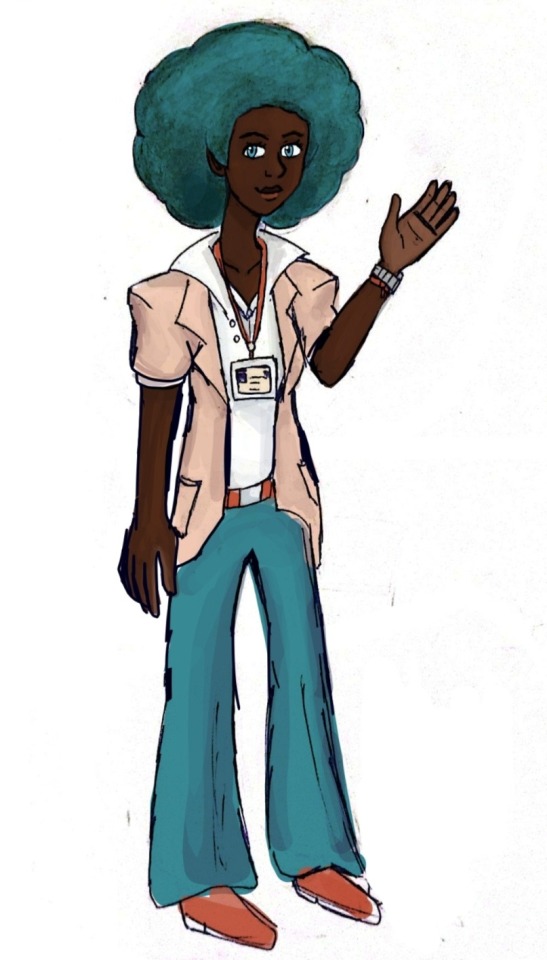
Here's my attempt at a Lenora redesign, taking in mind your and sharonz-arty-corner03's advice. While I had to finish this in a bit of a rush, I tried to take all the time I could to properly depict her Black features. If there is something to improve in that regard I would love your input!
Lenora's original design is infamous due to resembling the mammy stereotype, perhaps more noticeable in her big apron (in fact, that got changed for overseas release, and future apparitions). Even without that, her original design can be a bit confusing, as without context, some have thought she's a chef for example, when in fact Lenora is a museum director and archaeologist! So, I wanted her design to reflect that. She tends to be inside the museum doing director work, so I wanted to go with that.
Turns out, there isn't a rigid consensus on museum uniform etiquette, especially directors. But something formal and cool felt like a must... And I remembered I read somewhere that Lenora's partly based off Pam Grier. And I remembered that scene in Jackie Brown where she's wearing a stunning black office suit with a white shirt with big lapels underneath, and thought it could fit Lenora very well! I did take some liberties and stuck with her canon clothes' pallete for now. Oh and, to me personally, when I think of museum staff attire I think of lanyards with identifications on them, hence I gave her one, too! I don't know if directors need one but it feels very visual.
I have seen people comparing her canon headband with mammies' so I took that out in case it could still be in bad taste. I went with a full afro, keeping a young Pam Grier in the back of my mind lol.
Lastly, I looked up Black archaeologists and/or museum directors for inspiration, so I wanted to share some of my finds in case someone is interested: First, the website for the Society of Black Archaeologists. It has a major focus on endorsing the respect of African and African Diaspora material culture, and to of course, highlight the efforts of archaeologists of African descent! They have some articles and even podcasts. I really liked their interview of Dr. Peggy Brunache, a Haitian-American archaeologist. Second, Kinshasha Holman Conwill (her resume is too long to list here, but she's pivotal for some very important Black culture museums in the US) and lastly Kimberly Camp (museum leader and amazing doll artist.)
Nice! It's clear you put a lot of time and research into this design! I actually kind of liked her headband, I wear headbands all the time lmao. It added color. But all right. I do think that she could use a little more color in her palette; maybe an orange and yellow flower, if not the headband.
I'm definitely gonna go look into that website though 👀 IKTR 😤 thank you for introducing me to this!
41 notes
·
View notes
Text
I think one of the things I appreciated the most about Nocturne was the protagonism on the Haitian Revolution.
This was a revolution that didn't just change Haiti, it changed the world. This was the revolution that would make the first black state. The first slaveless state. That would make every slave nation tremble with fear, from Europe To America to Asia to Oceania to Africa. It was what was never meant to happen, but did.
It's the nation that would defeat Napoleon and the British marine. Nobody could take down Haiti. You know why Napoleon went to colonize Europe? Haiti. That's why. He couldn't take down Haiti. Couldn't make it french territory again. So, he turned towards Europe.
We are talking about an undefeated nation.
AND! AND! A largely Vodu nation!
I was SO happy to see Vodu be portrayed as the wonderful religion it is, sacred and divinely intertwined with the Haitian revolution. The revolution was noted to start with Vodu chants and ritual.
White people refused to understand the link between the two worlds that could bring ancestors to meet their descendants. They created zombies as a horror trope. They made vodu dolls as a horror gimmick. They took a sacred religion and reduced it and vilanized it.
And I'm so happy to see it being positively portrayed in such a famous media. Vodu practicioners have already made media of the like. But I was positively surprised with what Nocturne had to present to us.
Of course, the knowledge that the french revolution was incomplete, that it was NOT FOR EVERYONE, is then again, something I really appreciate as a history student and a person. The french revolution killed mostly peasent and established the bourgeoisie, but did it end the Noir Code? No. Did it establish women's and black people's suffrage? No. Did it make a agrarian reform? No. Was it for the people? It had it's importance. But it was, at the very least, not for all the people.
And let's not forget that the french revolution's main intellectual current would birth biological racism, an unscientific current that claimed evidence of "different sized skulls" for example to prove humans possessed different races based on phenotypes.
Last, but certainly not least: it is absurd to see people claim that "all indigenous people have been killed". Acknowledging multi-ethnic indigenous genocide HAS to go along with the respect that there STILL are indigenous people and they continue their fight for their lives and land.
You know who the show demonstrates as such? Olrox.
While I don't appreciate the show claiming "all of his people were slaughtered" as that is historically inaccurate, I was most happy to see an Aztec vampire present and very alive, connected to his culture, protagonizing the show. The Nahua are still very much alive and kicking and I appreciated that the show took that into account.
And Annette! Sweet Annette being one of the leads makes me most joyful. I can't stand idiots that claim her presence.on France was """historically innacurate""", check again, dumbasses, free black people were all over France (especially the children of black Caribbean elites, for example, from Haiti back then known as Saint-Domingue, which did not possess universities and would sent their children to study in Europe.)
Anyway. To see her star as one of the leads made me so incredibly happy. She's a wonderful character and I appreciate how they let Annette be unapologetic and direct, especially during a moment between revolutions were she was very aware the french revolution didn't mean shit to her people.
But she was so lovely and to see her afro-caribean religion present AND source of her power made me emotional more than a few times.
Castlevania Nocturne really did hit this nail on the head.
Anyways. To make sure I give people answers to "but where's the evidence to x thing you said?" Here are my sources:
THYLEFORS, Markel; “Our Government is in Bwa Kayiman:”A Vodou Ceremony in 1791 and its Contemporary Significations, 2009
DUBOIS, Laurent; Avengers of the New World : the story of the Haitian Revolution, 2004
BUCK-MORSS, Susan; Hegel, Haiti and universal history, 2009
#Castlevania nocturne#Haitian revolution#French revolution#castlevania annette#richter belmont#castlevania netflix#maria renard#tera renard#castlevania edouard#olrox#castlevania olrox#castlevania spoilers#I'm just a history student who really likes Haitian history#and who's sick and tired to see people glorify the french revolution#like if you wanted a revolution that was truly liberating and radical and you know REVOLUTIONARY#the Haitian Revolution is RIGHT THERE#like HELLOOOOOO#and i'm so sick of seeing Vodu religion demonized#it's a beautiful religion and it shouldn't matter what you think of it#it deserves to be respected#we all have a responsibility in anti-racism and anti-religious oppression#so work
439 notes
·
View notes
Text
If She Didn't Respect Christianity, What Makes You Think She Would Respect Other Religions

I mean she already took a lot of concepts of Christianity (and to some extent Judaism) and butchered them. We Christians were expected to just allow it because it's a so-called colonist religion when ignoring that Christianity has tons of poc who influenced it and it freaking comes from the Middle East. Seriously, just remember the backlash against Asmodeus and Beelzebub being about restraint when they are supposed to be the embodiment of their sins, yet they invoke artistic license. But now it's something like Voodoo people are up in arms, but again this is what happens when you have someone who is nonchalant and ignorant about other people's religions.
Also despite how people are saying only black people practice it, it's been practiced by white people since the 19th century so no it's not closed off to white people especially those who grew up around Louisiana heritage. And the Voodoo and Vodun spelling is a case of evolution itself and many practitioners in the Louisianian sect often use Voodoo. For the Haitian sect, they prefer using Vodoun to differ from one another. While Voodoo is influenced by Catholicism, the use of pagan gods and other stuff makes it considered heretical for mainstream Christian religion. One thing to add most of the depictions of Voodoo is mostly touristy like voodoo dolls are actually the reverse of their purpose which is to actually bless people. So, while for the tourists, Voodoo shops will give out dolls in actual practice they are meant for blessings.
Also evil people can use voodoo, while they don't have a name in Louisiana Voodoo in Haitian Vodom they are called bokors. While Bokors can be good or evil, they do serve the loa with both hands. So yeah, there can be evil voodoo practitioners who can invoke Loa for their own purposes. Also going back to white people and Vodun/Voodoo there are loa in the pantheon which are white like Mademoiselle Charlotte, Madam Brigette (wife of the famous Baron Samedi) , and Dinclinsin (who is often depicted as white colonial slave owner, feared for his temper and cruelty). Seriously, between you and me I wonder how that last asswipe got into the pantheon and why more fiction depicting Voodoo/Vodun doesn't have him as a villain who is willing to work with white supremacists. Again with that in mind it again doesn't mean that the religion is closed off to white people if it has white members of it's pantheon.
So in my opinion, there is some things about voodoo in depiction that I can let slide, but on the other hand I think people do think to research a bit more to better capture it. And I say that for all religions and not just minority religions. Research is good to better understand concepts and not look ignorant. Seriously, I would say how Vivziepop depicts Christianity is more like pop culture version with the added bonus of adding things that goes against the idea of faith like redeeming demons and again having the freaking ideas that the embodiments of sin have any morals. Also I don't think she figured out how other pantheons fit neatly in here because I do think there would be some loa that could fit in heaven, while other loa would fit in hell better. Baka is one of those few evil Loas and he often requires blood sacrifice and he would have fit Alastor more serving. Also Kalfu is also someone that Alastor serves because he does allow evil loa to come in. So again, an evil voodoo practitioner is possible if it depends on which god they serve.
#helluva boss#helluva boss critical#helluva boss criticism#helluva boss critique#vivziepop critical#vivziepop criticism#vivziepop#anti-vivziepop#hazbin hotel#hazbin hotel critical#hazbin hotel criticism#hazbin hotel critique
225 notes
·
View notes
Text
AFRICAN VOODOO
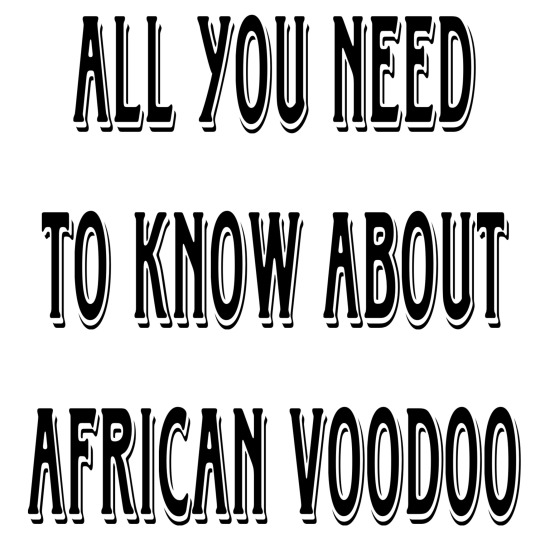
The deep truth about AFRICAN VOODOO
African Voodoo: Unraveling the Mysteries of a Rich Spiritual Tradition
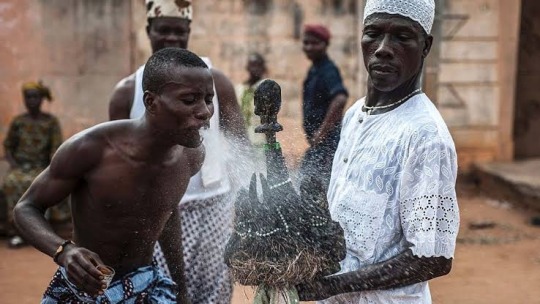
African Voodoo, often shrouded in mystery and misconceptions, is a complex and fascinating spiritual tradition with deep-rooted cultural significance. This ancient belief system, practiced in various forms across the African continent and the African diaspora, offers a unique perspective on the relationship between humans, nature, and the divine. In this article, we will delve into the world of African Voodoo, exploring its history, beliefs, rituals, and its enduring impact on the cultures and societies where it thrives.
A Diverse Tradition
Voodoo, also spelled Vodou or Vodun, is not a monolithic belief system; rather, it is a diverse and adaptable spiritual tradition that has evolved differently in various regions of Africa and beyond. Its origins can be traced back to the indigenous religions of West and Central Africa, where it was practiced by different ethnic groups. Over time, African Voodoo underwent syncretism with Catholicism and indigenous beliefs in the Caribbean, particularly in Haiti, giving birth to Haitian Vodou, which is perhaps the most well-known form of Voodoo.
Core Beliefs
At its core, African Voodoo centers around the veneration of spirits, ancestors, and deities. These spirits are believed to have the power to influence human life and the natural world. Each spirit has a specific domain, and practitioners seek their guidance and assistance through various rituals and offerings. Ancestor worship is a fundamental aspect of Voodoo, as it connects the living to their familial lineage and heritage.
The Loa, or spirits, are a central focus of Voodoo ceremonies. These spirits are intermediaries between humans and the ultimate divine force. Practitioners often enter trance-like states to communicate with the Loa, who possess them temporarily during rituals. The Loa are known for their distinct personalities and preferences, and offerings such as food, drinks, and dance are made to appease and honor them.
Rituals and Practices
Voodoo rituals are colorful and lively events filled with drumming, dancing, singing, and the use of symbolic objects. Rituals are often held in temples or outdoor spaces, and they vary widely depending on the specific tradition and purpose. Some rituals are celebratory, while others are intended to seek protection, healing, or guidance.
One of the most famous Voodoo rituals is the "Voodoo Doll," which is often misunderstood. These dolls are not meant for causing harm but are used as tools for healing or connecting with a specific person's spirit. Pins may be used symbolically to focus intention.
Voodoo in the African Diaspora
The transatlantic slave trade played a significant role in spreading African Voodoo to the Americas, particularly in regions like Haiti, New Orleans, and Brazil. In these places, Voodoo underwent further syncretism with local beliefs and Catholicism, resulting in unique variations of the tradition.
Haitian Vodou, for instance, is a vibrant blend of African Voodoo, Catholicism, and indigenous Taino beliefs. It has had a profound impact on Haitian culture and played a central role in the struggle for independence from colonial rule.
Misconceptions and Stereotypes
African Voodoo has been the subject of many misconceptions and stereotypes, often portrayed negatively in popular culture. These portrayals frequently focus on the more sensational aspects of Voodoo, such as curses and zombies, rather than its rich cultural and spiritual dimensions. It's important to recognize that Voodoo is a legitimate religious practice for millions of people, and like any belief system, it encompasses a wide range of beliefs and practices.
African Voodoo is a complex, multifaceted spiritual tradition with a deep and enduring cultural significance. It is a testament to the resilience of African heritage and the ability of beliefs to adapt and evolve over time. Beyond the stereotypes and misconceptions, Voodoo represents a profound connection between humans, nature, and the divine—a connection that continues to shape the lives and cultures of those who practice it.
Communication with the spirits, often referred to as Loa or Lwa in Voodoo, is a central aspect of Voodoo rituals and practices. Here's an overview of how practitioners communicate with these entities:

1. **Rituals and Offerings**: Voodoo rituals are the primary means of communication with the spirits. Practitioners gather in a designated sacred space, such as a temple or outdoor altar. They often create an elaborate ritual environment with symbols, candles, and ceremonial objects. Offerings, including food, drinks, tobacco, and other items, are presented to specific spirits to gain their favor and attention.
2. **Dance and Music**: Music and dance are essential elements of Voodoo ceremonies. Drumming and chanting create a rhythmic and trance-inducing atmosphere. Through dance and music, practitioners enter altered states of consciousness, allowing them to connect with the spirits more profoundly. It is believed that the spirits may possess individuals during these ceremonies, providing a direct channel for communication.
3. **Possession and Trance**: One of the most distinctive aspects of Voodoo rituals is the concept of spirit possession. Practitioners, often referred to as "servants of the spirits," may enter a trance-like state during which a particular Loa or spirit is believed to take control of their body. In this state, the possessed individual may speak in the voice of the spirit, offering guidance, advice, or requests on behalf of the spirit.
4. **Divination**: Divination is another way to communicate with the spirits in Voodoo. Practitioners may use various divination tools such as tarot cards, cowrie shells, or casting of objects to seek guidance from the spirits. These divination practices help practitioners understand the desires and intentions of the spirits and may provide insights into their own lives.
5. **Prayer and Invocation**: Voodoo practitioners often use prayer and invocation to establish a connection with the spirits. Specific prayers or invocations are recited to call upon a particular spirit's presence and assistance. These prayers are typically passed down through generations and may be spoken in a specific language or dialect.
6. **Voodoo Dolls**: Contrary to popular misconceptions, Voodoo dolls are not used for causing harm but are symbolic tools for communication. They can represent a specific person or spirit and are employed in rituals to convey intentions, requests, or healing energy to the spirits associated with them.
It's important to note that communication with the spirits in Voodoo is a deeply spiritual and cultural practice, and the methods may vary among different Voodoo traditions and communities. Voodoo practitioners believe that these rituals and practices maintain a reciprocal relationship with the spirits, offering offerings and devotion in exchange for protection, guidance, and assistance in various aspects of life.
Masquerades and Voodoo in Africa: A Cultural Tapestry of Spiritual Expression
Africa is a continent rich in cultural diversity, and its spiritual practices are as varied as its landscapes. Among the many vibrant traditions that permeate African culture, masquerades and Voodoo (often spelled Vodun or Vodou) hold significant places in the hearts and lives of its people. This article explores the fascinating intersection of masquerades and Voodoo, shedding light on how these practices are intertwined with African spirituality.
**Masquerades: The Embodiment of Spirits**
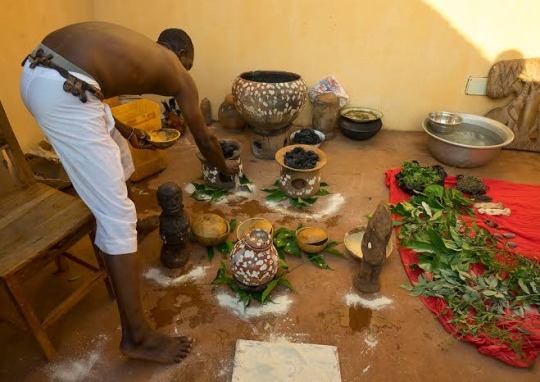
Masquerades are a prominent cultural phenomenon across Africa, characterized by elaborate costumes, masks, and dances. These performances serve multifaceted purposes, including entertainment, social commentary, and spiritual expression. However, it's the latter aspect, the spiritual dimension, that ties masquerades to Voodoo and other indigenous African belief systems.
1. **Role of Ancestors**: In many African cultures, masquerades are a means of connecting with ancestors and spirits of the deceased. The masks and costumes worn by performers often represent these spirits. During masquerade ceremonies, participants believe that the spirits inhabit the masks and interact with the living. This interaction serves as a way to honor and seek guidance from the ancestors.
2. **Protection and Cleansing**: Some masquerades have protective roles in communities. They are believed to ward off evil spirits, illnesses, or other malevolent forces. These masquerades often perform purification rituals, symbolically cleansing the community and its members.
3. **Harvest and Fertility Celebrations**: Masquerades are frequently associated with agricultural and fertility rites. They may perform dances and rituals to ensure a bountiful harvest or to promote fertility among the community members.
4. **Social Order and Governance**: Masquerades also play a role in enforcing social norms and maintaining order within communities. They may act as judges, mediators, or enforcers of communal rules during their performances.
**Voodoo: The Spiritual Heartbeat**
Voodoo, a widely practiced religion across West Africa and its diaspora, is deeply entwined with masquerades and the spiritual fabric of the continent.
1. **Ancestor Worship**: Voodoo places a significant emphasis on ancestor worship, much like masquerades. Practitioners believe that the spirits of ancestors are ever-present and can influence the living. Offerings, rituals, and masquerade performances are ways to honor and seek the guidance of these spirits.
2. **Connection to Nature**: Voodoo, like many African belief systems, recognizes the close relationship between humans and nature. It views natural elements, such as rivers, forests, and animals, as inhabited by spirits. Masquerades often incorporate nature-centric symbolism in their performances.
3. **Trance and Possession**: Both Voodoo and certain masquerades involve altered states of consciousness. In Voodoo, devotees may enter trances and become possessed by spirits, similar to the possession experiences during some masquerade ceremonies. These states facilitate direct communication with the divine.
4. **Rituals and Sacrifices**: Offerings and sacrifices are common in both Voodoo and masquerade traditions. These rituals are believed to appease spirits and seek their favor.
**Cultural Resilience and Transformation**
While masquerades and Voodoo have endured the test of time and colonization, they have also adapted and evolved. In the African diaspora, especially in the Americas, they fused with other cultural elements and religions, giving rise to unique traditions such as Haitian Vodou and New Orleans Voodoo.
masquerades and Voodoo in Africa are vibrant expressions of spirituality, culture, and identity. They are living traditions that continue to shape the lives and beliefs of countless individuals and communities, offering insights into the enduring resilience and adaptability of African cultures in the face of change and adversity.
The timing for Voodoo practices, like many spiritual traditions, can vary depending on the specific tradition, the purpose of the practice, and the preferences of the practitioner. There is no universally "best" time for Voodoo practice, but certain times and occasions are commonly observed:
1. **Festival Days**: Many Voodoo traditions have specific festival days or holidays when practitioners gather to perform rituals and ceremonies. For example, in Haitian Vodou, the Festival of the Ancestors (Fèt Gede) is a significant event where people honor and communicate with their ancestors. These festivals often have fixed dates in the Voodoo calendar.
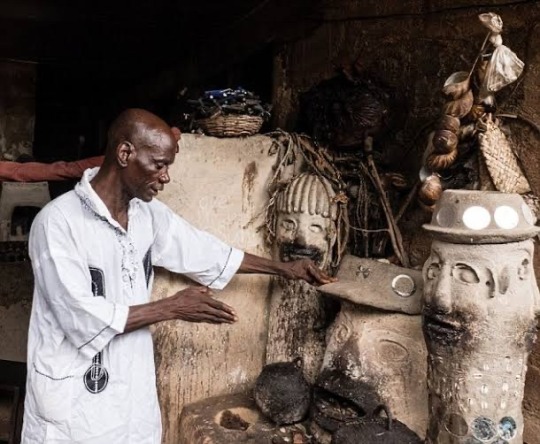
2. **Full Moon and New Moon**: Lunar phases are significant in various spiritual practices, including Voodoo. Some practitioners prefer to conduct rituals during the full moon or new moon, believing that these phases are particularly potent for spiritual work. The full moon is often associated with amplifying energy and intentions, while the new moon is seen as a time for new beginnings.
3. **Nighttime**: Many Voodoo rituals take place during the nighttime. This is believed to be a time when the veil between the spiritual and physical realms is thinner, making it easier to communicate with the spirits. Candlelit ceremonies, drumming, and dancing are common elements of Voodoo rituals conducted at night.
4. **Personal Preference**: Individual practitioners may have their own preferred times for Voodoo practice based on their personal experiences and beliefs. Some may feel a stronger connection to the spirits during specific times of the day or year.
5. **Life Events**: Voodoo is often integrated into various life events such as births, marriages, and funerals. The timing of these rituals is determined by the occurrence of these events.
6. **Consulting a Voodoo Priest/Priestess**: For more specific guidance on the timing of Voodoo practices, consulting a Voodoo priest or priestess is advisable. They can provide insights based on their knowledge and experience within their particular Voodoo tradition.
It's essential to remember that Voodoo is not a monolithic practice; it encompasses various traditions and regional variations, each with its own customs and beliefs. Therefore, the best time for Voodoo practice can differ significantly from one tradition to another. Additionally, Voodoo is deeply rooted in cultural and spiritual contexts, so practitioners often follow the customs passed down through generations within their specific communities.
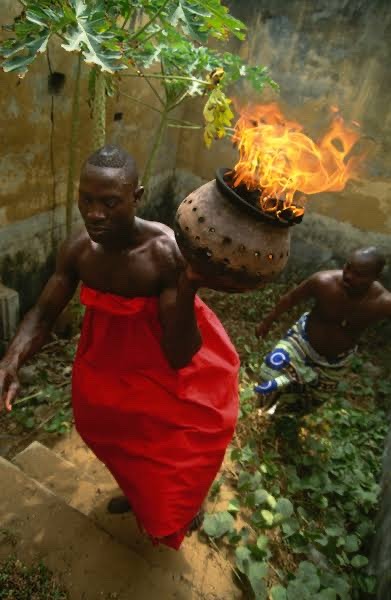
#life#animals#culture#aesthetic#black history#history#blm blacklivesmatter#anime and manga#architecture#black community#heritagesites#culturaltours
267 notes
·
View notes
Text
It's tough work being the world's greatest occult detective. Down on the street I see the jack-o'-lanterns burning and the bedsheet ghosts with their candy buckets. The only ghosts I see up here are all the people I couldn't save.
A dame walks into my office. She's agitated. Something's got her in such a tizzy she put on her formal evening Beetlejuice costume but forgot the makeup. "I think someone's after me. I found an axe in the bushes, a voodoo doll in my Apple Jacks, and a burning torch in my gasoline-soaked rags room! Somebody's out to turn my body into a vacant lot and install a Spirit Halloween made of lead!"
"First of all," I tell her, "voodoo dolls are not an actual practice of the misunderstood and stigmatized Haitian Vodou religion. Second of all...I can stop you from bein' murdered."
"Oh, thank you, Mr..."
"Hain." I light a cigarette with my Hereditary promotional lighter. "Sam Hain."
"Mr..." She blinks. "Your name is Sam Hain?"
"After the Celtic holiday where the veil betwixt life 'n' death is thin..."
"Sahwin."
"Sal won what?"
"It's pronounced Sahwin. Mr. Hain, your name...it's not a real pun. It doesn't mean anything."
I let my cigarette hang to the side and look out the window. Boy, life is hard for an occult detective. 'cause in this city, it's always Halloween, and mixed in with all your nightly candy, you just might find some secrets hiding in your McDonald's pumpkin bucket...
252 notes
·
View notes
Note
Log Anon
I just learnt that ‘voodoo’ dolls were never apart of actual Voodoo and it’s from Hollywood being racist
They actually are apparently, at least in Haitian Voodoo, just not the way they're depicted in media and tourist shops. They're used to keep a line of communication open with the dead.
24 notes
·
View notes
Photo
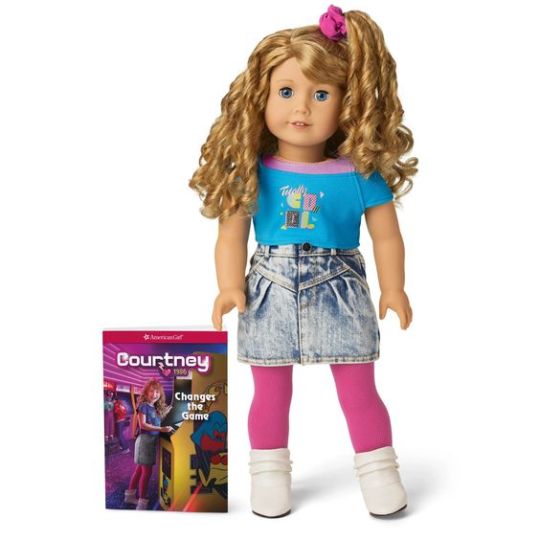
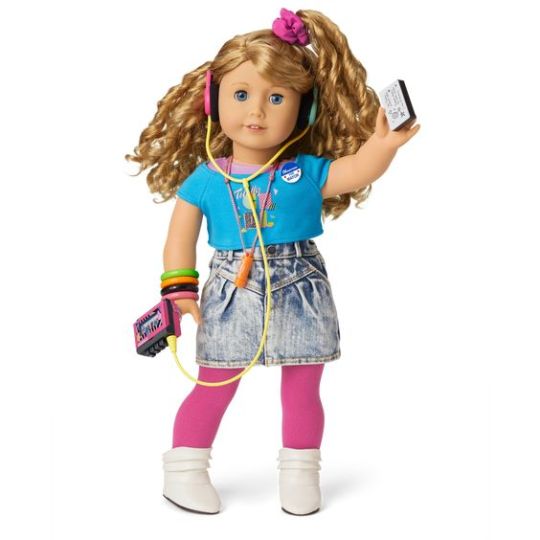
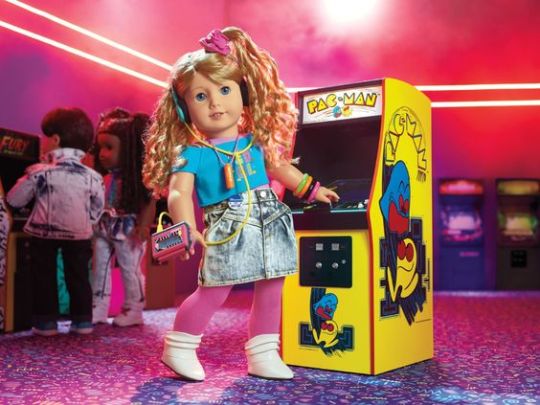
Oh, look, another blonde hair, blue eyed doll from AG. I watched the cute little stop-motion short film AG made for Courtney, and I have to admit, it was fucking cute and her charm won me over.
youtube
There’s *some* actual historical engagement with the popularization of video games. The biggest thing is that her mom is running for mayor of their fictional town in California (because of course Courtney has to be a Valley Girl) and faces a bunch of sexist BS on a TV interview. It covers the space shuttle era of space travel, Challenger disaster and the emotional impact that had on the United States.
In her second book, Courtney has a classmate with AIDS. I’m glad that was included, because putting AIDS and HIV-positive kids in schools was a huge fight in the 80s. Here in Tampa, the mother of Eliana Martinez, a disabled girl who had contracted HIV in a blood transfusion at birth, went to court to get her daughter into school, and a federal judge ruled she could go to school as long as she spent the day in a glass cage like an animal. It was that bad. Eventually, Eliana was able to attend school without the cage because her mother, Rosa, was amazing.
In spite of everything I like about Courtney’s story, let’s be real. AG’s 80s doll should have been Latina. A Cuban-American girl living in Miami, with at least one parent who’s an Operacíon Pedro Pan adoptee, and with relatives who came over during the Mariel Boatlift. And I’m not just saying that because my parents were living in Miami in the 80s, I’m saying it because Miami was an incredible place in the 80s.
Operacíon Pedro Pan was a program by the U.S. State Department and Catholic Church for Cuban children to be sent to America when parents feared they would lose their parental rights and their children would be sent to communist indoctrination camps. It was a chance for their kids to be raised as Catholic in free America instead of atheists under the brutal Castro regime. About 14,000 children were removed from Cuba to be mostly re-settled in Miami.
You may be familiar with the Mariel Boatlift if you’ve seen the opening scene of Scarface, which actually sums up the situation pretty well.
youtube
Now, granted, Mariel only happened between April and October of 1980. Even after the boatlift officially ended, people seeking to flee Cuba continued to come on boats. The “wet foot, dry foot” policy meant that anyone fleeing Cuba who managed to set foot on American soil was guaranteed asylum. However, they had to face the US coastguard trying to intercept them and turn them back on the water. Refugees from Haiti fleeing the Duvalier regime also flocked to Miami, but since Duvalier was right-wing, Haitians weren’t granted the same protections as Cubans were and it was absolute bullshit.
On top of all that, Miami also had thriving African-American, Afro-Caribbean, Colombian, Jewish, and gay communities. There was just SO MUCH incredible stuff going on in Miami in the 80s, and I mean, hello, Miami Vice was a whole aesthetic!
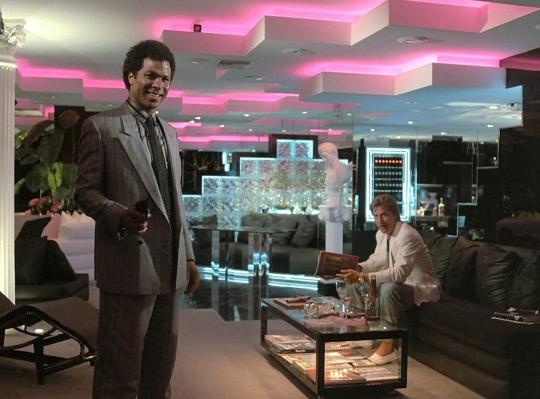
You could include all the stuff that’s going in in Courtney’s books and STILL pack in so much more amazing history. The overall vibe I get with Coutney’s collection is that even though there’s some good stuff in her stories, it’s more about selling 80s nostalgia than actually teaching 80s history, which is a travesty. I know it’d be hard to engage with 80s politics and Ronald Reagan without pissing off a *lot* of people, but you can still engage with some serious 80s history if you just look outside of the blonde hair, blue eye box.
160 notes
·
View notes
Note
People keep saying Ryan changed and learned but he shared a video using a racist term and stereotype for a Haitian religion not that long ago, shared posts from a transphobic account, not to mention all the transphobic, homophobic, racist and generally far right accounts he follows. And he never apologized for the antisemitism or anti-vax things he shared. I think he said some empty words about asking questions which is in itself a bit of a dog whistle. That's not even touching on the casting couch sexual coercion joke that Ryan and Oliver and Kenny made and probably only deleted because somebody pointed out attaching Peter's name to it was a bad idea.
If the majority of buddie stans & toxic bucktommy stans ACTUALLY gave a fck about these issues, they'd be talking about them all the time. Posting links, donating to marginalized communities, etc.
My whole point is that they're only using these issues now, as a means of justifying their hatred of a character from the show because they only want Buck to be with Eddie.
I'd also like to add, if it's the post he shared with the (voudon) tommy & gerrard dolls, yall HAVE TO BE INSANE to be mad at that. The religion is known by many names including voudon, voodoo, obeah etc., although obeah is more associated with Trinidad and voudon with Haiti.
Were the posts he shared transphobic? Or is it likely that he didn't know the accounts were transphobic & just shared a meme/story from them? Y'all act like people are chronically online and know everything about everyone they follow on socmed.
I saw the anti-vax post so that bit is substantiated. He was clearly wrong for that. The anti-vaxx post he shared also compared vaccinations and wearing masks to Nazi Germany which is insensitive and historically incorrect, even inflammatory, but it is not antisemitic. It's an out of pocket comparison, sure. But it certainly isn't antisem. Antisem would be if Ryan posted that he was prejudiced towards Arab, Jewish or Christian people. Thus far, I've not seen him post anything like that.

Also, if people have a problem with the casting couch skit, why is Ryan being the main one persecuted for it, as if Oliver and Kenny weren't a part of it? I know you mentioned them as well, but your ask is clearly mostly focused on what Ryan's done.
And furthermore, Ryan has also been the ONLY ONE to post about the Palestinian genocide, while the rest of the cast has not said a word about it. So, dislike/boycott/protest him as a person sure, but its possible to also recognize what he's done, especially when no one else has had the guts to even share a link, speak out against or donate to Palestinian families.
Furthermore, y'all like to conflate issues and warp them into a whole thing, when it's actually nothing at all. I remember Oliver having to delete X because people were attacking him for queerbaiting. And all of that was on the buddie stans. Y'all have made fandom absolutely joyless and unimaginative because y'all expect your preferred ships to be canon, and go absolutely berserk when they don't. It's annoying and embarrassing.
#anti buddie#anti bucktommy#buddie#bucktommy#ryan guzman#oliver stark#kenny choi#911 fandom#fandom discourse
12 notes
·
View notes
Text
What would you steal from my house
sending love to @this-was-a-terrible-idea for tagging me!
zero pressure tagging @galkyrie @chipmunkery @krizariel @bi-bats but actually full pressure because i love stealing shit
10 notes
·
View notes
Text
i was gonna make a joke that if curly had a vodou doll of pony he’d sleep w it like a teddy bear considering the dolls r typically used for protectiom BUT
in haitian vodou, vodou dolls could also b used for like contacting the dead and i just,,,think it would b interesting if he made one for ponys parents yknow just to see what the hell could happen, a “why the hell not” if u could , maybe he accidentally did get in contact w em and thats how he met the fellas LMFAOOOO
18 notes
·
View notes
Text
Doctor Strange and the supernatural characters pt 2 - Jericho Drumm
Much to my surprise, being a doctor is not the only thing Jericho and Stephen have in common. As I went through his chronology, I noticed they’re quite similar in many aspects, whether magical or personality-wise.
I’ve always loved the concept of Doctor Voodoo and had read some of his adventures, but this time around I made a complete reading and he’s still one of my favorite magic users for many, many reasons.
But first, let’s dive into his past real quick to learn more about his story, motivations and powers.
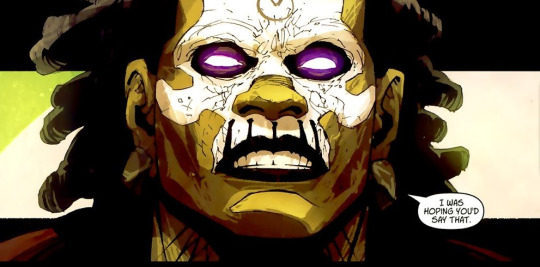
Jericho Drumm and his twin brother Daniel were born in Port-au-Prince, Haiti. The twins were separated when their parents died and Jericho decided to pursue a career in the USA as a pyschologist and scholar (some writers will give him another field of expertise, but it’s commonly accepted as canon that he has a doctorate in Psychology), whereas Daniel stayed and became a houngan (a voodoo priest). Upon learning that Daniel fell ill, Jericho returned to Haiti. Daniel claimed that Damballah, the loa known as the evil serpent-god, cursed him. Before dying, his twin asked Jericho to go to the jungle and meet his mentor, Papa Jambo, in order to learn magic. Jericho, at that time, did not believe in the supernatural and confronted Damballah, being defeated by forces he did not understand yet.
Papa Jambo, then, accepted Jericho as an apprentice and taught him voodoo magic. As a last attempt to defeat Damballah, Papa Jambo performed a ritual to summon Daniel’s spirit so they could become two men in one. The ritual was successful, leaving the V symbol imprinted on his forehead and the white streaks on his hair. Papa Jambo then passed away as a result, leaving the mantle of Brother Voodoo to his disciple Jericho.
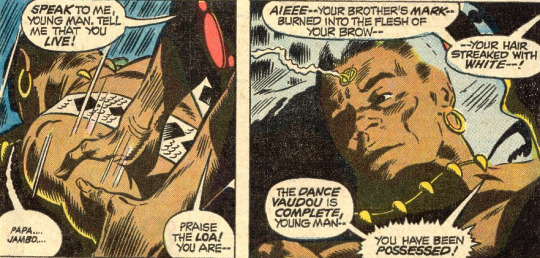
He then confronted Damballah once more and defeated his enemy, whom would be later retconned to be a random evil spirit instead of the loa himself, since the loa are not considered evil spirits.
And here’s a quick disclaimer: there are lots of misconceptions and stereotypes when it comes to Haitian voodoo in the Marvel universe, mostly because it’s a real religion and many stories were not written by poc. I made a quick research but just to point a few: voodoo dolls are considered a myth, although some are used in New Orleans voodoo for tourism [1]; the term used in Sorcerer Supreme to describe Brazilian voodoo refers to the religion as "macumba”, which is a pejorative term. The Brazilian equivalent to Haitian voodoo is called Candomblé Jeje [2]; Marie Laveau is often portrayed as a evil voodoo witch, but she’s celebrated in New Orleans for help, healing and empowerment [3].
Disclaimer done, so back to Jericho. For a while, he stayed in Port-au-Prince, having his own Sanctum and accepting the help of a butler (pretty similar to Wong in his first years). He then later moved to New Orleans, fighting many enemies and teaming up with many popular heroes, such as Moon Knight, Spider-Man, Doctor Strange, Blade, Black Panther, Luke Cage and so on.
When Stephen considered himself unworthy of his title, the Eye of Agamotto elected Jericho as the next Sorcerer Supreme. And here I need to point out that, in my humble opinion, Jericho was nerfed from what he used to be as a magic user. I consider him waaay more powerful back then, even without the power of the Vishanti at his disposal.
When it comes to personality, Jericho has the very same introverted personality as Stephen’s in early comics, as well as the formal rhetorics, rational thoughts and kindness towards civilians.

Slowly, the readers realize that he’s also lonely and afraid of relationships, constantly pushing people away.
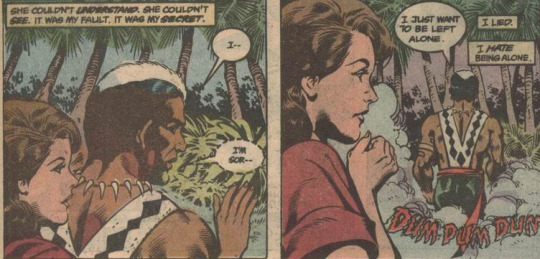
One may arguee that he’s been involved with many female characters, the most important being Wanda, and I agree they’re super cute together. Sadly, for editorial decision, Jericho was pushed away to hint a comeback for Wanda x Vision. Monica Rambeau was also interested in him for a while, but that writing is TERRIBLE, portraying him like a clingy (and kinda stalker) pretendent. I’d say Jericho takes things veeeeery slow because he’s afraid of relationships, as pointed out earlier. On top of that, I super hc him as aroace, because it’s rare to see him in a romantic light. It’s up to each person’s interpretation, of course.

Moving on -- and since I’m comparing him to Stephen -- let’s also talk about guilt and sense of duty. Jericho as Sorcerer Supreme is as stubborn as Stephen: he doesn’t rest, he feels responsible for every mystical issue AND is compelled to sacrifice himself in order to fulfill his role.
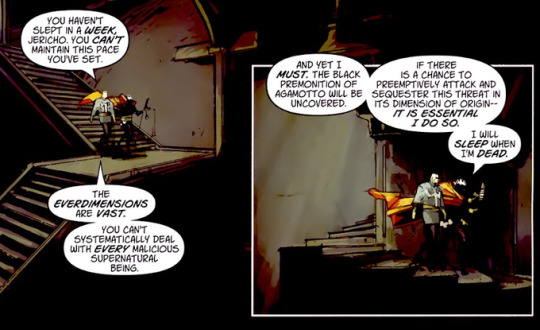

That’s why he ends up killed in the first place, after all. Thankfully, Doom brings him back to life (AND WE LOVE TO SEE IT).
In addition to the previous relationship Stephen and Jericho built through the years, we also have now a delicate matter, which is Daniel. Daniel was really mad at Stephen and blamed him for Jericho’s death. Since then, the spirit of Jericho’s brother was used as bargain in Savage Avengers, and to be honest, I don’t know how to feel about it, but it’s canon now, so... If Jericho is better off without his brother, so be it.
In conclusion, I do believe Jericho is a very important figure in Stephen’s life, not only as a co-worker at Strange Academy and former mentor, but also as a friend. Not to mention that he’s amazing as a stand-alone character, with a rich lore and so much potential. I find outrageous how little Jericho is used in comics. I need him in a solo title or at least in a one-shot with Zoe!

Bonus: The Vishanti and the Three-Who-Are-All
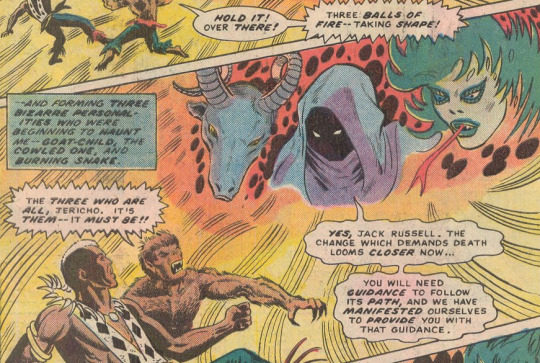
Although the Three-Who-Are-All had their debut in Werewolf by Night, Jericho was directly involved in their prophecy, joining Jack Russell and his allies in order to defeat a great evil. They're not as powerful as the Vishanti -- nor as important -- but it’s curious to see that the concept of a trinity is the same.
[Part 1]
Special thanks to Val, he’s the only Jericho stan I know out there and we only have each other to cry over him haha love u <3
43 notes
·
View notes
Text
CRACKPOT THEORY: Baron Samedi was worshiped in New Orleans during the 19th century.
Here is all the evidence I have collected to support this hypothesis.
1. THE “CLOPIN-CLOPANT” STORY FROM THE DAILY PICAYUNE
"Clopin-Clopant" is a story that was published in the Daily Picayune of New Orleans, on Sunday, December 25th, 1892, page 21.
The full article can be viewed online here: https://www.newspapers.com/article/the-times-picayune/90528775/
In the following excerpt, the author describes “the great Zombi” as a dangerous, angry spirit that Haitian slaves brought with them to New Orleans following the Revolution:
“Somehow or other Clopin-Clopant was held directly responsible by the ignorant blacks und whites for every misfortune that happened in the faubourg. To the former, gradually imbued with the wild theories of fetish belief brought to New Orleans by the San Domingo negroes after the island insurrection, the old hunchback was the slave of the great Zombi, and many whispered he was the Zombi himself, who had followed them in anger from his chosen island to wreak vengeance upon them and their masters wherever they dwelt.”
Later, “the great Zombi” is described as having the power to create more “Zombis”:
“But governor commands him, in the name of the king, to open the portal and come forth. And obeys tremblingly, and, falling upon his knees, says: "Monsieur, have pity! I am not the Zombi! I have never harmed any one in my life. I am only a miserable old man, who wants to die in peace. I am not the Zombi." "Tiens!" cried the governor indignantly, "we want a hundred Zombis like you in New Orleans. Rise, monsieur, and receive from your fellow citizens the reward of your noble service.”
Here is a question for New Orleanians… How is the “Zombi” in “great Zombi” pronounced?
Is it pronounced like the Haitian zonbi, or the English zombie?
Sometimes, I hear people pronounce the “Samedi” in “Baron Samedi” like the name “Sam”, but this is not accurate.
Here is how “Baron Samedi” (really, Bawon Sanmdi) is actually pronounced: https://youtu.be/NN9pGa5GmZ4?feature=shared&t=575
It is pronounced similarly to the English word zombie, and the Kikongo nZambi.
(this is why I think the Sanmdi in Bawon Sanmdi could be African in origin… although not necessarily derived from nZambi…)
Importantly, Baron Samedi is associated with the creation of zombies. Really, zonbi. In order to create a zonbi, you have to go through him.
If Zombi is pronounced like the English word zombie, I think it is plausible that the real identity of the “great Zombi” in this story is Baron Samedi. The author may have invented this story because they overheard tales involving Bawon Sanmdi and zonbi from the descendants of Haitians who arrived in New Orleans. Hence, they confused great Zombi with Bawon Sanmdi.
2. MARIE LAVEAU’S WORSHIP OF “THE SPIRIT OF DEATH”
In The Magic of Marie Laveau (2020), Denise Alvarado describes how Marie Laveau worshiped the Spirit of Death:
While not explicitly called by name in rituals described by reporters and witnesses of Marie Laveau's magick, I believe he may have been represented. In her gris gris ceremonies, Marie Laveau always summoned Li Grand Zombi; but in one description, she also called upon the Spirit of Death: “She summoned the spirits of darkness and death, the supreme power of the great Zombi, who protects and hears the Voudoo's prayer” when suddenly, “there appeared in the group the Voudoo, being clad in the garb of death . . . he wore a skull and crossbones upon his bosom and carried a scythe in one hand and a small wooden coffin in the other” (Times Daily Picayune 1890, 10). A ritual is then described whereby the Spirit of Death knelt in front of the serpent and knocked on the ground three times. Grabbing a rag doll from the altar, he placed it into the little coffin along with a handful of dirt gathered from the ground—more than likely grave dirt. Once he closed the coffin, it signaled the point of the ceremony when all of the participants approached the gris gris pot and received their portion, and the Dance of Death, known today as the Banda, commenced.
Source: Alvarado, Denise. The Magic of Marie Laveau: Embracing the Spiritual Legacy of the Voodoo Queen of New Orleans. Weiser Books, 2020.
I wouldn’t read much into the physical description of this Spirit of Death, due to the unreliable, sensationalized coverage Voodoo received in newspapers.
In Witch Queens, Voodoo Spirits, and Hoodoo Saints: A Guide to Magical New Orleans (2022), Alvarado provides an additional clue: the use of purple robes during a ceremony hosted by Marie Laveau.
Previously, I had been under the impression that this was the same ceremony that involved the “Spirit of Death”, but this is not the case. For this reason, I think this piece of evidence is weaker than I’d thought, as the use of purple robes could be coincidental.
Here is the full context, so you can draw your own conclusions:
Another clue recently became evident. According to one individual who called himself Pops, “This was around 1875. She was dressed in a long purple robe with some kind of rope around her waist . . . da women coworkers wore purple, too. Da men wore white and purple . . .” (Dillon, Folder 025). Voudous who serve the Guédé and Baron Samedi wear purple when conducting rituals specifically for those spirits, as purple, black, and white are their colors. This informant was about eighty-one years old at the time of the interview and was believed to have been a reliable witness and suspected of knowing much more than he offered to interviewers.
Source: Alvarado, Denise. Witch Queens, Voodoo Spirits, and Hoodoo Saints: A Guide to Magical New Orleans. Weiser Books, 2022.
The full excerpt can be found in Robert Tallant’s Voodoo in New Orleans:
Howard LeBreton, a very old colored man, recalled the crowds that attended a Voodoo dance in 1875.
“This one was out by Lake Pontchartrain,” he said, “and thousands of people come out to see it. I can remember it good. The Voodoos danced on barges on the water just away from the shore and they carried all kinds of torches and lighted candles. The queen was dressed in a long purple dress with a blue cord ’round her waist, and all her co-workers wore purple dresses, too. And they didn’t wear nothin’ underneath. Them was what they called good-time dresses. The men wore white pants wit’ purple shirts and they carried white candles.
“You never seen such dancin’ in your life. They all danced first slow, then faster. They would go ’way down to the ground and come up shakin’.
“On the barges they had statues of saints and altars and lots of stuff to eat. They had wine and beer and everybody got drunk. It was just like a picnic.”
Despite all this, Howard contended that white people did not see all the Voodoo meetings. “There was some nobody but the real Voodoos ever seen,” he said. “People didn’t know that, but it’s the truth.”
Source: Tallant, Robert. Voodoo in New Orleans. United Kingdom, Pelican Publishing Company, 1983.
3. “THE DEVIL” IN “THE HIGH SILK HAT” AND “FROCK COAT”
Newbell Niles Puckett (1926) describes how “the Devil” appeared to African Americans in the South:
“...Most of the time, however, when going about on the earth, the Negro devil has the appearance of a gentleman, wearing a high silk hat, and a frock coat, and having an "ambrosial curl" in the center of his forehead to hide the single horn which is located there. Mrs. Viriginia Frazer Boyle tells me that when she was first taken to church by her father and mother she used to scan the congregation eagerly for a man with that "ambrosial curl" and one with the "evil eye", which her old Negro nurse had told her were to be found in every crowd, even in church. In most cases this Negro devil has cloven feet, a characteristic also credited to him in European circles. Possibly the black cat is the animal most chosen by the Negro devil for impersonation...Nevertheless the devil is not limited to this particular form but may appear as a rabbit, terrapin, serpent, housefly, grasshopper, toad, bat, or yellow dog at will. To the Mississippi Negroes he often appears as a black billy-goat; a view strictly in keeping with his custom at the English witches' Sabbath. In New Orleans it is thought by some that snakes and black cats are incarnations of the devil…”
Source: Puckett, Newbell Niles. Folk beliefs of the southern Negro. University of North Carolina Press, 1926. https://archive.org/details/folkbeliefsofsou00puck/page/552/mode/2up?q=devil
A figure “very similar” to this appears in Southern (specifically, Woodruff County) folktales: “He is commonly seen near a crossroads, a cemetery, or, as is often the case, both simultaneously. Sometimes, as in Haiti, he holds a cane.”
Source: Jacobsen, K. (Nov. 1, 2002). The Society for the Study of Southern Literature, Volume 36, Issue 1: https://southernlit.org/volume-36-issue-one-fall-2002/
Here is Baron Samedi, as depicted by Andre Pierre, and described by Milo Marcelin:

“Baron-Samedi, père et chef des Guédé, est le maître des cimetières. On le représente sous les traits d’un noir robuste, qui porte une longue barbe blanche; il est vêtu d’une redingote, coiffé d’un melon ou d’un chapeau haut de forme, ganté de blanc; il a toujours en main un bâton coco-macaque et une bouteille de clairin ou rhum blanc. Une croix noire, sur laquelle figure parfois un crâne, est son Emblème.”
TRANSLATION:
“Baron Samedi, father and chief of the Guede, is the master of cemeteries. He is represented with the traits of a robust Black man, who sports a long white beard; he is dressed in a frock coat, dons a bowler hat or a top hat, white gloves; he always has a coco macaque stick in hand and a bottle of clairin or white rum. A black cross, on which sometimes appears a skull, is his Emblem.”
SOURCE: Marcelin, Milo. "Mythologie vodou (Rite Arada), Volume II." Pétionville: Éditions Canapé Vert (1950). p. 153
IS THIS THEORY CORRECT?
I do not know, but this theory can be validated or debunked.
I believe the earliest known list of the lwa is found in Duverneau Trouillot’s (1885) Esquisse ethnographique: Le vaudoun. If Baron Samedi is not named in this list, this would suggest he was never transmitted to New Orleans. Benjamin Hebblethwaite’s (2021) A Transatlantic History of Haitian Vodou might also include evidence that supports or disproves this theory. Sadly, I do not have access to either of these texts…
A final clue can be found in the Hoodoo Saint Expedite.
HOODOO IS NOT VOODOO YOU FUCKING IDIOT!!!
I KNOW! I KNOW!
I actually have a deep respect for what Hoodoo is, and the history behind it. It’s basically just “what if you strip all the frills and fluff away from magic”. It’s so practical and robust, I think it’s really cool – oh shit! I’m getting really off topic here!
Anyways, Hoodoo has a very underrated pantheon of Saints. Among them is Saint Expedite, who is petitioned for his mastery of magic.
Baron Samedi is also an extremely powerful magician, and according to Denise Alvarado: “In New Orleans Voudou, Baron Samedi is associated with St. Expedite.”
Source: Alvarado, Denise. Witch Queens, Voodoo Spirits, and Hoodoo Saints: A Guide to Magical New Orleans. Weiser Books, 2022.
Did the Haitians worship Baron Samedi in secret by hiding him under the name “Saint Expedite”?
People in the Hoodoo community – especially those further South – can probably determine whether there is any truth to this, or if it’s just bullshit!
As I write this, I think it’s probably difficult to definitely determine whether Baron Samedi was worshiped prior to the revitalization movement. Much like Maitre Carrefour, Baron Samedi is associated with the nocturnal aspect of Vodou, and is associated with the bòkò. Even if there is no evidence that he was worshiped, that does not mean he was not worshiped in secret.
In the words of “Pops”: “There was some nobody but the real Voodoos ever seen…People didn’t know that, but it’s the truth.”
#commentary#im not part of either community so i lack insight#but if they have not already done so i think it should be TOP PRIORITY for new orleans voodooists to network with people in the hoodoo comm#this should actually take priority over networking with haitians and west africans (although that's also important) for reasons i may expla#n at a later time...
4 notes
·
View notes
Text
& 𝐒𝐇𝐄 𝐒𝐌𝐀𝐑𝐓 𝐀𝐒 𝐅𝐔𝐂𝐊 𝐈 𝐆𝐎𝐓 𝐓𝐇𝐀𝐓 𝐁!𝐓𝐂𝐇 𝐒𝐓𝐑𝐀𝐈𝐆𝐇 𝐎𝐔𝐓𝐓𝐀 𝐘𝐀𝐋𝐄!

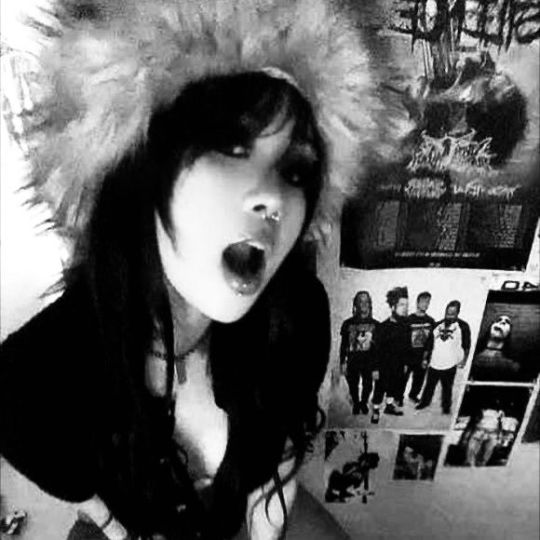
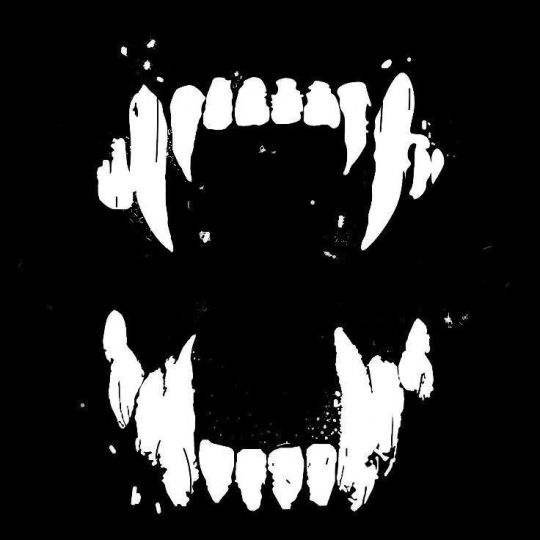
— 🦇 ( KIÉSAN / MARIE ) 𝓼he / 𝓽hey . ellie williams' doll . minor . haitian . vi's cupecake . pansexual . katsuki & eren apologist . guitarist & art enthusiast . könig's liebe . taurus . (n)sfw / sfw & multi fandom blog . comentary & film director . toji's sad princess . ur fav spiritual hyper-fem with mental issues ♡ currently taking a break from tumblr 🎀

I: jennifer's body. mlist. information. second account. taglist form. carrd.
II: teen x. big flirt w/ the jjk men & why'd u only call me when ur high w/ ellie williams
III: i need u. playing with satoru's hair, fawning over vi's tattoos, kissing all the scars on ellie's face & ranting to choso abt the fnaf lore :3
IV: now playing: lust by kendrick lamar.

— ( #𝐏𝐋𝐀𝐘𝐁𝐎𝐈𝐂𝐀𝐑𝐈𝐋𝐔𝐕𝐄𝐑🧛🏽♀️ ) ©sonderessence 2024. don't steal my stuff. i will clown on your ass.
#✧ with love kiésan#best viewed in light mode#pinned post#masterlist#writers on tumblr#writers masterlist#writing blog#x reader#thank you for 40 notes!!#Spotify#ellie x reader
51 notes
·
View notes
Text
Lore Dump: Regarding the Supernatural
Note: This is gonna be a bit of a short one as it's more of a clarification for people who have Muses that are tied to the supernatural.
So, let me just get this out of the way and say that yes, there are elements of the supernatural present within the original SR games (although more so the first two, and that expansion I don't even consider canon). And while they aren't exactly anything that substantial, I've always seen that as an invitation to explore the concept further. Cause really, how the hell do you not love the idea of mashing organized crime and stuff that's far beyond the realm of comprehension together? It's definitely had a hold of me ever since a particular boss fight in the second game, but that's something I'll get to in a second.
Anyway, let me just lay it out like this; in the first SR, after the death of an important character (no spoilers on the off chance one of you actually wants to check out the series), you are given the chance to call up a number you might have seen around the map for a business known as Eye for an Eye. They are run by voodoo practitioners who can revive the aforementioned character, and have them come back as a zombie homie. This can also be done in the second game after the death of another major character.
Now, in addition to Eye for an Eye, we have a character introduced in SR2 who goes by the name of Mr. Sunshine. He is the second-in-command of the Sons of Samedi, a Haitian drug cartel led by a man who goes by the moniker of The General. Mr. Sunshine is important to our discussion because he is the first instance of The Boss encountering someone tied to the supernatural in the main plot, and not have it be just some silly little easter egg.
This is mainly shown during the fight you have with him (the mission is fairly graphic by the end), where Mr. Sunshine pulls out a voodoo doll that's able to both knock The Boss around, and keep himself invincible until the doll is shot out of his hands. Yet even on the brink of death, Mr. Sunshine is seemingly capable of reviving himself over and over again, right until The Boss decides to just decapitate him.
With all that said, you're probably wondering just what in the hell does any of that mean. Well, I think it's pretty simple; if the game is going to go out of its way to depict something as abnormal and clearly supernatural as that was, in a main mission no less, then what does that tell you about the rest of the world? What else might be lurking around that people might not be fully aware of? And yeah, I know it's kinda silly to go that buckwild over tiny little hints of shit being a little weird in this universe. But like hell am I keep myself or anyone else from taking the opportunity to explore that further.
And let me be clear, I'm not looking to do anything totally out there. There is a way to depict something regarding magic, the supernatural, and anything else that may fall under that category in a way that's both very interesting, and acknowledges that in a modern setting such as this, it's not commonplace. So I would absolutely love to do that with y'all. I love those kinds of settings, I love throwing Django into these situations where he has to deal with things that are soooo out of his league. It's a lot of fun! And I hope you can see that vision as well.
#Lore Dump ⚜#When I said short one I meant that it isn't going as in depth as I normally would have done lmfao
4 notes
·
View notes